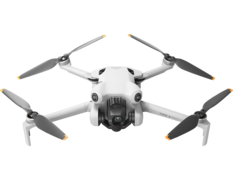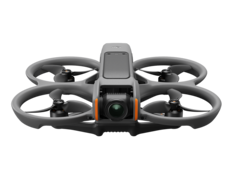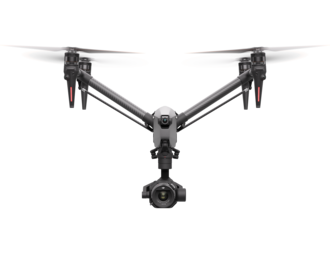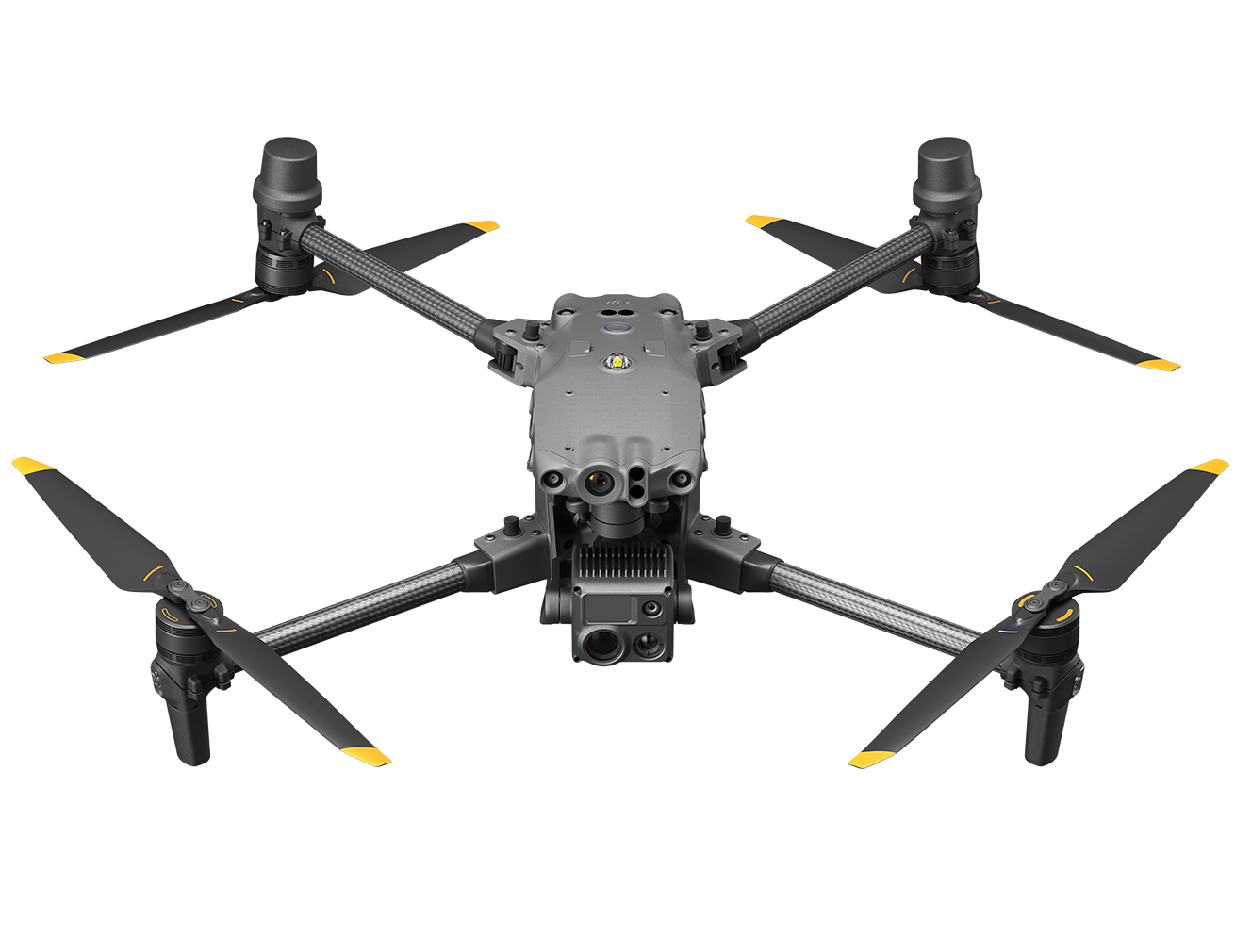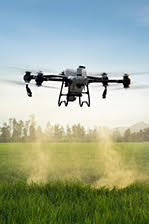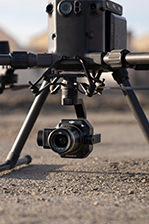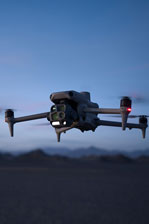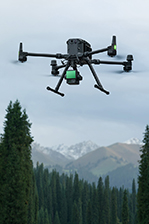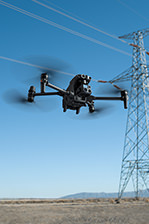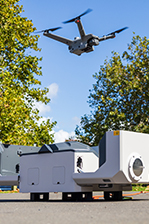Get DJI Care Refresh Cover through Ferntech.
Fly through the sky in ways that seem impossible.
We never lost our passion for flying, and with DJI FPV, those passions have turned imagination into reality. With this immersive and intuitive aerial platform, get ready to go into the beyond.

FPV Has Never Looked This Good
Sleek and aerodynamic, the DJI FPV aircraft delivers powerful propulsion, battery life, and wind resistance, making this system as capable as it is visually stunning.
DJI FPV stands out in more ways than one. Sporting front LEDs and aircraft arm lights with customizable-color, DJI FPV allows pilots to make their aircraft as unique as they are.

Next-Level Immersion. Unparalleled Control.
Feel the thrill of immersive flight provided by the DJI FPV Goggles V2 [1] and DJI FPV’s super-wide 150° FOV. [2] HD video transmission at up to 120fps gives you an ultra-smooth, real-time view of your flight.
Whether you’re a seasoned FPV pilot or a complete beginner, DJI FPV offers three intuitive flight modes that let anyone fly confidently from day one.
S Mode
Get the dynamic look of FPV footage easily in S mode. This hybrid flight mode combines the freedom of flying manually with the simplified controls of previous DJI drones.
N Mode
Ideal for new users, N mode offers immersive flight with traditional drone flight controls along with DJI safety features like obstacle sensing. [3]
M Mode
Fly in M mode for complete, limitless control and the full FPV flight experience. Customize parameters and enjoy flight and footage unlike anything else. [4]
Emergency Brake and Hover
Even for experts, manual FPV flight can be intimidating. That’s why DJI FPV comes with an emergency brake and hover feature. Simply press this button on the remote controller while flying in any mode, at any speed, and the aircraft will stop and hover stably within a few seconds.
Advanced Safety Features
An auxiliary bottom light, Smart Return to Home (RTH), Low Battery RTH, and forward and downward obstacle sensing are all integrated into DJI FPV to help ensure a safe flight, even at high speeds. [3]

The Imaging Power You Expect from DJI
Get results that match the intensity of your flights.
Powerful propulsion capabilities combined with a 150° super-wide FOV provide an unrivaled view. 4x Slow Motion, RockSteady stabilization, and distortion correction give pilots even smoother, more dramatic results.
Unreal Footage
The DJI FPV aircraft can record 4K/60fps video at up to 120 Mbps, capturing crisp details that make footage look as exhilarating as the flight.
RockSteady Stabilization
No matter how dynamic your maneuvers get, RockSteady EIS technology ensures your footage is ultra-smooth.
* H.264 and H.265 video coding formats are both supported, giving you more video editing options. [5]

Meet O3
The DJI O3 (OcuSync 3.0) Transmission System was adapted to match the unique needs of DJI FPV. Enjoy crystal-clear real-time video transmission, even at distances of up to 10 km.
Auto-Switching for Seamless Signal
DJI FPV supports auto-switching between 2.4 and 5.8GHz frequencies and provides a video transmission bitrate of up to 50 Mbps, [8] significantly reducing stutter and compression artifacts. High-gain antennas on the aircraft include three transmitters and four receivers to enhance signal, resulting in a stable, reliable video feed.
* If the signal is disconnected, DJI FPV will automatically enable fail-safe RTH.
Committed to Safe Skies
An Optimized Experience
DJI FPV gives users an additional layer of safety with built-in Automatic Dependent Surveillance-Broadcast (ADS-B). This system receives flight location information of manned aircraft in your area and will send warnings on the Goggles V2, providing enough time to avoid any manned aircraft nearby. [1]
Easily Replaceable Parts
The gimbal camera, landing gear, and top shell of the DJI FPV aircraft are all modular and easily replaceable, making repairs more convenient. DJI Care Refresh is also available, offering coverage for a wide range of damage and giving you greater peace of mind as you fly. [9]
The DJI Virtual Flight App [10]
The DJI Virtual Flight app allows users to practice flying in lifelike, simulated scenarios before entering the real world. Simply connect the DJI FPV Goggles V2 and remote controller, and you’re ready to master flight in a risk-free virtual environment.
Bring Someone Along with Audience Mode
DJI FPV supports Audience Mode. Just set other DJI FPV Goggles V2 units to your aircraft channel and you’re ready to share the view from above.
The DJI Fly App
It’s Ready to Fly and So Are You
Forget complicated wiring and assembly. The DJI FPV Combo offers everything you need, assembled and ready to go in one box. Simply turn on and activate the aircraft, remote controller, and goggles and go fly.

When flying in New Zealand with the DJI FPV Goggles a spotter will be required to keep the drone line of sight to comply with the CAA 101 rules.
Download the DJI Fly App for IOS
Download the DJI Fly App for Android
Product Specifications
Camera
Gimbal
Aircraft
Sensing System
Charger
Intelligent Flight Battery
Video Transmission
DJI FPV Goggles V2
DJI FPV Goggles Battery
DJI FPV Remote Controller
microSD card
Footnotes
In the box
DJI FPV Goggles V2 x 1
DJI FPV Intelligent Flight Battery x 1
DJI FPV Goggles Battery x 1
DJI FPV AC Power Adapter x 1
DJI FPV Drone (Universal Edition) x 1
DJI FPV Remote Controller 2 x 1
DJI FPV Propellers(pairs) x 4
DJI FPV Landing Gear x 2
DJI FPV Gimbal Camera x 1
DJI FPV Gimbal Protector x 1
DJI FPV Top Shell x 1
DJI FPV Control Sticks x 2
DJI FPV Goggles Antenna (Dual Band) x 4
DJI FPV Goggles Power Cable (USB-C) x 1
DJI FPV Part 13 Goggles Foam Padding x 1
DJI FPV Goggles Headband x 1
WHY BUY FROM US?
By buying from Ferntech, you'll have the confidence that you are dealing directly with New Zealand's leading drone experts. Our staff are knowledgable drone pilots who offer expert advice, trusted support and superior specialist service. Only through us will you receive a full New Zealand warranty, phone and email support, and access to our certified Repairs Centre with DJI-qualified drone technicians. And we guarantee that we will have the best prices on the market — if not let us know and we will match any price (conditions apply).
Warranty Details
Flight Safety
1. What should I be cautious of when operating DJI FPV?
When using DJI FPV:
1. Do not fly in areas with heavy signal interferences such as areas with strong Wi-Fi signals;
2. Do not fly your aircraft too far away or at too low of an altitude;
3. Make sure that you are flying the aircraft in a safe and unrestricted area. For detailed regulations, please consult your local laws and regulations;
4. Always follow local laws and regulations when flying with FPV goggles on;
5. Before flying, it is recommended to update all relevant firmware to ensure you have the latest information regarding restricted flight areas.
2. What should I be cautious of when operating DJI FPV with multiple pilots in the same area?
Signal interference may occur when multiple DJI FPV units are operating simultaneously. To avoid this, follow the instructions below:
1. Maintain a safe distance of at least three meters between each aircraft. Power on and choose a frequency channel for each aircraft one at a time. Avoid using the same frequency channel as other pilots. If live feeds begin to blur, restart the device;
2. If the frequency channel you choose is close to another pilot's channel, ensure that your aircraft is a safe distance from their goggles;
3. Maintain a safe distance between each pair of goggles;
4. If your live feed becomes blurry due to multiple DJI FPVs flying in the same area, land your aircraft and restart.
3. What precautions should be taken when using DJI FPV in a new country or region for the first time?
When using DJI FPV in a new country or region for the first time, make sure you check and follow local radio frequency laws and regulations. Connect to the DJI Fly app using the goggles and the software will automatically tune the system settings to be in adherence with local laws and regulations.
4. What precautions should be taken when using the DJI FPV Goggles V2 ?
1. Always follow local laws and regulations;
2. During flight, always pay attention to any on-screen prompts or alerts;
3. When using the goggles, avoid exposing the screen to direct sunlight as they may become damaged.
5. What precautions should be taken when taking off or landing DJI FPV?
1. Before takeoff, make sure that the propellers are correctly installed, the sensors are correctly calibrated, the batteries are fully charged, and there are no obstacles around the aircraft such as pedestrians, buildings, or trees;
2. Before landing, determine a safe landing area with a flat surface away from water and make sure no pedestrians or obstacles are nearby. Also, make sure the aircraft is in N mode in preparation for landing;
3. Before your first flight, make sure you have viewed all relevant official product information and tutorials in order to be fully aware of operating procedures and safety requirements.
6. What coverage does DJI Care Refresh offer?
DJI Care Refresh is a comprehensive and reliable protection plan that offers accidental damage coverage for DJI FPV. DJI Care Refresh (1-Year Plan) includes up to two replacements in one year. DJI Care Refresh (2-Year Plan) includes up to three replacements in two years in addition to the standard two-year product warranty that starts from the date of purchase.
Aircraft
1. Is DJI FPV waterproof?
No.
2. Is the DJI FPV aircraft compatible with other remote controllers?
Yes. DJI FPV is compatible with the DJI Motion Controller.
3. Is the DJI FPV aircraft compatible with other goggles?
Check the latest firmware updates for any new information on goggle compatibility.
4. Does the DJI FPV aircraft have an auxiliary light?
Yes. DJI FPV has a downward LED auxiliary light.
5. Does DJI FPV support GPS?
Yes. It uses GPS+GLONASS+GALILEO.
6. Can the DJI FPV aircraft hover?
N mode and S mode support auto-hovering through the use of the VIO+TOF+GPS system.
7. Does DJI FPV support obstacle detection and avoidance?
The DJI FPV aircraft comes with forward and downward vision sensors that can automatically detect objects and decelerate when flying in N mode. However, there is no automatic avoidance function. When obstacles are detected, the aircraft will slow down but will not stop completely unless controlled to do so by the pilot.
8. What photo resolution and format does DJI FPV support?
3840×2160 and JPEG.
9. What video formats are supported by DJI FPV?
MP4/MOV.
10. What FOV does the DJI FPV aircraft live view support?
A 150° FOV is available when shooting at 50 or 100 fps. For other frame rates, the FOV will be 142°.
11. Does the DJI FPV aircraft support D-Log or another neutral color format?
It supports D-Cinelike.
12. What video coding format does the DJI FPV aircraft support?
H.264 and H.265.
13. Does the DJI FPV aircraft support manual adjustment of the camera parameters?
Yes.
14. What are the DJI FPV aircraft's maximum supported video resolution and frame rate?
In HD mode, it supports up to 4K/60fps video. In Smooth mode, it supports up to 1080p/120fps video.
15. Can the DJI FPV aircraft directly connect to DJI Fly via smartphone?
No. You can connect it to a computer via USB-C cable to read the microSD card, or launch DJI Assistant 2 for firmware updates.
16. How long does it take for the DJI FPV aircraft to locate a GPS signal?
When DJI FPV is used frequently within a short amount of time and there is no signal interference, it takes about 20 seconds to search for and locate a GPS signal. If DJI FPV is not used frequently, this process may take longer. Users are not recommended to fly until there are a sufficient number of GPS satellites located.
17. What is the image transmission range of the DJI FPV aircraft?
DJI FPV has a 10km maximum transmission distance (FCC: 10 km, SRRC: 6 km, MIC: 6 km, CE: 6 km) when unobstructed, free of interference, and FCC-compliant. <br>
Note: Maximum flight range specification is a proxy for radio link strength and resilience, not aircraft battery capability.
Goggles
1. What is the difference between DJI FPV Goggles and DJI FPV Goggles V2?
The DJI FPV Goggles only support 5.8 GHz, whereas the DJI FPV Goggles V2 support both 2.4 and 5.8 GHz and can select the frequency automatically. In some areas, frequency use is restricted by law to only allow the use of 2.4 GHz.
2. What is the video transmission latency of the DJI FPV Goggles V2?
The latency between the camera capturing an image and displaying it on the goggles screen is lower than 28 ms in Smooth Mode and 40 ms in HD Mode.
3. What is the screen resolution of the DJI FPV Goggles V2?
Both screens are 1440×810.
4. What is the difference between recording with the DJI FPV Goggles V2 and with the camera on the aircraft?
The goggles only record transmitted footage in a resolution of 810p/60fps, and do not support RockSteady EIS; <br>
Shooting with the aircraft camera supports up to 4K/60fps and RockSteady EIS.
5. Do the DJI FPV Goggles V2 support screen recording?
No, the goggles only support the recording of transmitted footage (excluding OSD information).
6. Can the DJI FPV Goggles V2 be charged by third-party batteries?
The standard XT60 power cable supports charging with third-party batteries. The voltage input range is 11.1-25.2 V.
The USB-C cable can only be used with the battery of the goggles. Power banks or other third-party charging devices are not supported.
7. Can I charge my phone using the battery of the DJI FPV Goggles V2?
No.
8. How can I power on the battery of the DJI FPV Goggles V2?
Connect the goggles to the DJI FPV Goggles battery via power cable. Press once and then press and hold the power button to turn on or off. To avoid short circuits, do not power on the goggles when the goggles are not connected to the battery.
9. Do the DJI FPV Goggles V2 support audio transmission?
Yes, it can transmit the stereo sound of the aircraft in real time.
10. Can DJI FPV Goggles V2 connect to my smartphone?
Yes, when the goggles are connected to your smartphone, you can use the DJI Fly app to activate and update firmware for the aircraft, goggles, and remote controller. You can also playback or download the footage.
11. How can I connect the DJI FPV Goggles V2 connect to my smartphone?
You can connect the goggles with your smartphone via OTG, USB-C, and Lightning cables.
Please note that the goggles only support standard USB-C protocols and MFI-certified Lightning cables, and non-standard cables such as the Huawei fast-charging cable are not currently supported.
Remote Controller
1. What is the difference between the DJI FPV Remote Controller 2 and the DJI FPV Remote Controller?
The DJI FPV Remote Controller 2 supports two frequency bands. It is also smaller and more portable than the previous model, and adopts an ergonomic design that is more comfortable to hold.
2. What is the control latency of the DJI FPV Remote Controller 2?
7 ms.
3. Can the DJI FPV Remote Controller 2 connect to my smartphone?
No.
4. Can the DJI FPV Remote Controller 2 connect to a computer?
Yes. You can connect the remote controller to a computer via USB-C cable and launch DJI Assistant 2 to update firmware.
5. What is the max battery life of the DJI FPV Remote Controller 2?
About nine hours.
Entire FPV System
1. How can I link the components of DJI FPV together?
Link the aircraft with the goggles and then with the remote controller. Refer to the DJI FPV linking tutorial if you encounter any issues or require more detailed information or instructions.
2. How can I activate DJI FPV?
For information on how to activate DJI FPV after purchase, please refer to the quick start guide and in-app instructions.
3. How can I update the firmware of all the DJI FPV components (aircraft, goggles, and RC)?
Before connecting the goggles to the DJI FPV app to update firmware, ensure that the aircraft, goggles, and remote controller are properly linked and that all devices have sufficient battery power.
Aircraft functions
1. Does DJI FPV support other remote controllers and goggles?
Check the latest firmware updates for any new information on remote controller or goggle compatibility.
2. What intelligent features does DJI FPV have?
Smart Return to Home.
3. Does DJI FPV support obstacle detection?
Yes. DJI FPV comes with forward and downward vision sensors. The aircraft automatically decelerates when detecting objects in N mode, but will not stop completely unless controlled to do so by the pilot.
4. Does DJI FPV support the Find My Drone function?
Yes. You can set the start-up noise alert as a shortcut on the remote controller (when the aircraft is still connected). You can also use the function when the goggles are connected to the DJI Fly app.
If you lose connection with the aircraft during flight, you can view the last 30 seconds shot on the goggles before disconnection (a microSD card must be inserted in the goggles for this to work). The video will be cached on the goggles microSD card and will not automatically upload to online platform or cloud.
5. How can I switch the DJI FPV aircraft to fly in M mode?
In the goggles view, select Settings->Control->Remote Controller, and enable M mode. Also, adjust the back screw so that the throttle does not re-center automatically. This will provide more accurate control and a better flight experience.
When the aircraft is in M mode, it does not hover automatically. Please practice in the DJI Virtual Flight app before flying in M mode.
Goggle functions
1. Are the DJI FPV Goggles V2 compatible with other aircraft and remote controllers?
Check the latest firmware updates for any new information on aircraft or remote controller compatibility.
2. Can Audience mode be enabled by other goggles?
Check the latest firmware updates for any new information on goggle compatibility for Audience mode.
3. What should I do if the image distorts in the goggles display during flight?
Open the camera settings page and enable Camera Calibration and Distortion Correction.
Remote Controller functions
1. Is the DJI FPV Remote Controller 2 compatible with other drones and goggles?
Check the latest firmware updates for any new information on aircraft or goggle compatibility.
2. How do I switch between Mode 1 and Mode 2 on the DJI FPV Remote Controller 2?
When the remote controller is connected to the aircraft and goggles, you can select Mode 1 or Mode 2 in the goggle settings.
3. Can I disable the throttle from re-centering automatically on DJI FPV Remote Controller 2?
Yes. Open the protective cover on the back of the controller and adjust the throttle screw according to personal preference.
Aircraft installation and adjustments
1. How do I install the propellers?
Install the propellers according to the marks on the aircraft and the propellers, and refer to instructions in the quick start guide.
2. Can I replace parts of the DJI FPV aircraft by myself?
You can replace the top shell, gimbal camera, and landing gear. For more details, please refer to the relevant DJI FPV tutorials.
Goggle adjustments
1. Can I adjust the interpupillary distance of the DJI FPV Goggles V2?
Yes, the interpupillary distance range is 58-70 mm.
2. Can the DJI FPV Goggles V2 correct refractive errors?
No. However, you can purchase corrective lenses and attach them to the DJI FPV Goggles V2.
3. Is there only one size for the DJI FPV Goggles V2 foam padding? Can I detach the foam padding?
Currently, the DJI FPV Goggles V2 foam padding comes in two sizes. It is not recommended to detach it too often.
However, if the foam padding has become damaged, you can purchase a new one at the DJI Online Store.
4. What can I do if the screens or lenses of the DJI FPV Goggles V2 fog up?
Changes in temperature and humidity may cause the screens or the lenses to fog up, which is normal. Avoid using the DJI FPV Goggles V2 in environments where temperature and humidity are extreme or tend to vary significantly.
If the screens or the lenses have fogged up, place the goggles in an indoor environment with a normal temperature and wait until the fog is gone. Keep the DJI FPV Goggles V2 away from hot and humid environments.
5. What if I feel dizzy while flying with the DJI FPV Goggles V2 on?
If you feel dizzy or disoriented during flight, users are recommended to land safely and take off the goggles. If you feel intense discomfort, please seek medical help.



